Distant and Weird Galaxies
What's covered here:
- What defines an active galaxy?
- What different types of active galaxies exist?
- What is a quasar?
- What is the most distant object yet observed?
Distant Galaxies
As we look further out into space, we see objects as they appeared
further in the past. You have to remember that light travels at one
speed, so you can't see something until the light from that object gets
to your eyeballs. It is sort of like waiting for the post office to
deliver a message. You can't read the message until it arrives. If the
distance is large, the delay in the message is greater. If you were to
look at the Sun in the sky, you would not be looking at where the Sun
currently is, but where it was about seven minutes ago, since that is
how long it takes for light to go from the Sun to the Earth. You could
also say that the Sun is seven light minutes away. Alpha Centauri is
four light years away, so we are seeing it as it looked four years ago
when we look at it in the night sky. The center of our galaxy, Sgr A*,
is about 25,000 light years away, so if there were a great big explosion
in the middle of our galaxy today, we wouldn't see it until about 25,000
years from now. When you start to look at galaxies, the time delay is
even worse. Even our nearest large neighbor, the Andromeda galaxy, is
about 2.25 million light years away.
When we look at galaxies that are billions of light years away, we are
seeing them as they looked billions of years ago. They are so far away
and the light from them takes so long to get here that we don't see them
as they look today, but as they looked billions of years ago, when they
were younger objects. As we look further and further out, the objects we
see are younger and younger. If you remember how young stars were
sometimes rather active and did strange things then you may not be
surprised to learn that young galaxies are also rather peculiar. Many of
these young galaxies are quite unusual - even more unusual then
young stars. They go through phases where they will emit abnormally
large amounts of light, often at unusual wavelengths, such as radio or
x-ray. Sometimes these galaxies also have unusual colors, spectra, and
shapes.
We generally throw all of these unusual galaxies into one main
group, those that are labeled as Active
Galaxies. Sometimes only the centers of these galaxies are
visible, in part because they are so abnormally bright. In those cases,
we may just refer to them as Active
Galactic Nuclei. Either way, these are amongst the strangest
things out there. Actually, about 10% of all galaxies are active, so you
can't ignore them. I suppose you could, but that wouldn't be very
polite. Here are some examples -
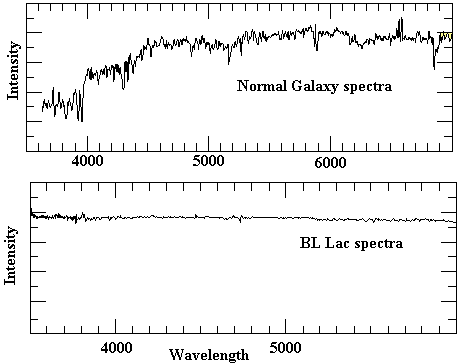 Figure 1. The spectrum of a BL Lac galaxy is
compared to that for a normal galaxy. In the normal galaxy there is a
mix of absorption lines (from mainly stars) and emission lines (from hot
gas clouds). In the BL Lac galaxy there are neither of these things,
which makes it difficult to determine the chemical nature, velocity and
distance of these galaxies. Based on the image from Bill Keel's slide set.
Figure 1. The spectrum of a BL Lac galaxy is
compared to that for a normal galaxy. In the normal galaxy there is a
mix of absorption lines (from mainly stars) and emission lines (from hot
gas clouds). In the BL Lac galaxy there are neither of these things,
which makes it difficult to determine the chemical nature, velocity and
distance of these galaxies. Based on the image from Bill Keel's slide set.
BL Lac Galaxies, which are
also called blazars, were
misnamed. The first one discovered was given a star name (BL Lac), in
particular a name associated with stars that change brightness. This was
a mistake, since we know that these are actually galaxies with very
bright central regions, so bright that they look like a bright star when
seen at great distances. It took some careful studies of their spectra
and detailed telescopic studies to show that these are actually the
bright cores of galaxies. Once that was figured out, astronomers started
to notice all of their bizarre features.
- By observing them for long periods, it was noted that they tend
to have variable brightnesses at different wavelengths (got brighter and
fainter over time).
- Observations of their spectra show there are virtually no
emission or absorption lines - this is a fairly unusual characteristic
for a galaxy, especially an Active Galaxy.
- The radiation coming from these objects is known to be
non-thermal (not related to heat). The spectra do look rather uniform
and flat, close to being continuous spectra. The optical light from
these objects is also highly polarized, indicating the influence of a
strong magnetic field.
- Blazars produce light at all wavelengths, ranging from being
strong radio sources all the way to being sources for gamma-rays.
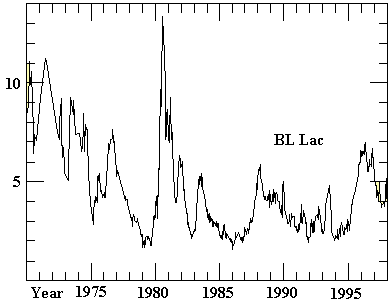
Figure 2. The changing brightness of BL Lac is illustrated
over the years. This shows the change in the radio intensity of the
galaxy. Based on the image from Bill Keel's slide set.
One of the annoying features of blazars is that because they don't
have any spectral features that can be seen clearly (no emission or
absorption lines), it is difficult to determine their velocities or (by
using Hubble's Law) their distances. Actually, blazars are kind of
rare when compared to some of these other strange galaxies.
Seyfert galaxies are the next
strange beasts in the astronomical zoo. There are actually two types of
these. Like BL Lac, Seyferts show very abnormally bright cores. However,
unlike BL Lac galaxies, these have emission lines (hurray!). One aspect
of the emission lines is how they can appear as either broad or narrow
- this is one of the things that caused astronomers to divide them into
two categories. Now why would an emission line look narrow or broad?
Don't they all look the same? - not really.
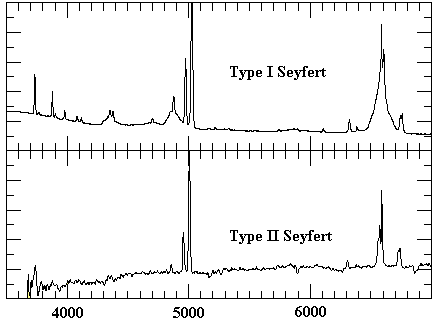 Figure 3.
Spectra for the two types of Seyfert galaxies. Notice how the emission
lines for the Type I Seyferts are wider than that for Type II Seyferts.
Based on the image from Bill
Keel's slide set.
Figure 3.
Spectra for the two types of Seyfert galaxies. Notice how the emission
lines for the Type I Seyferts are wider than that for Type II Seyferts.
Based on the image from Bill
Keel's slide set.
Emission lines are produced by hot gas. If the hot gas is moving at
a pretty good rate of speed, then the Doppler effect comes into play -
the emission lines could be shifted to different wavelengths. If the hot
gas is moving at many different speeds, some fast, some slow, some
toward, and some away, then the Doppler effect would cause the spectral
features to appear at a wider range of wavelengths than if it was just
sitting still and being boring. Therefore (I like that word; it sounds
so final), the presence of broad emission lines tells us that there are
a lot of different velocities associated with the gas that is producing
the emission lines and that these motions are large and varied in
direction. Perhaps this is a clue as to what is going on in these
objects...
Here are some gory details about the two types of Seyferts -
- First of all, both types are very luminous, and they sometimes
change their brightnesses (or the brightness of their cores) on
relatively short time scales (days or weeks). For these things to change
brightness so quickly, they must have relatively small energy sources -
so the place where all the weird stuff is going on must be pretty small
(perhaps this tells us something about what these things are like?).
- When Seyferts are viewed much more closely, it seems that they
have shapes like spiral galaxies, except of course, for their bright, active cores (the link here shows
Hubble telescope images of the cores - note how bright and star-like
they are).
Now to get down to the nitty-gritty differences between the two types
- Type I Seyferts
- There are broad spectral emission lines in them. The widths of
these lines indicates velocities around 1000 km/s.
- These are also very bright sources of UV and x-ray light, as
well as the normal visible light that comes from them and their very
bright cores.
- Type II Seyferts
- If the other type has broad emission lines, then these guys
have narrow emission lines, which indicates that they have very low
velocities associated with them.
- Along with having the bright cores, they are also bright at IR
wavelengths
First blazers, now Seyferts - quite different, but are they really that
different? You'll see...
That's enough of the weird galaxies; now for the galaxies that just
look really weird when we see them in different ways. This sort of has
to do with the different types of technologies that have come along over
time. After World War II, radio telescope technology really exploded on
to the scene (not literally; you know what I mean). As the technology
got better, our views of some things changed. What looked like normal
galaxies with visible light telescopes looked really strange with radio
telescopes. In some cases, galaxies were producing more light at radio
wavelengths than at the visible light wavelengths. Galaxies that do this
or do other weird things at radio wavelengths are called Radio Galaxies. What we've got here
are galaxies that at visible wavelengths look like regular galaxies, but
pull out your radio telescope and you got a completely different,
bizarre galaxy.
 Figure 4. A typical radio galaxy. The galaxy itself
is not much larger than the dot that represents its location in the
image. The sizes of the lobes are much greater than the size of
the galaxy they come from. Also visible are the jets that come from the
galaxy's core toward the lobes. Images from NRAO.
Figure 4. A typical radio galaxy. The galaxy itself
is not much larger than the dot that represents its location in the
image. The sizes of the lobes are much greater than the size of
the galaxy they come from. Also visible are the jets that come from the
galaxy's core toward the lobes. Images from NRAO.
Generally, when a galaxy has some sort of strange radio light coming
from it, it tends to come in two forms - either there is a strong source
of light from the core, which isn't so exciting, or it is spewing out
radio emitting gas in various directions. This is sort of what people
think of when they think of radio galaxies. In the case of the big-time
spewage, there is usually some sort of structure that shows the motion
of material from the core, generally in a jet type of structure (sort of like
that bipolar outflow you have with accretion disks around black holes).
The stuff that is getting spewed will pile up over time,
generally into big lobes. A
classic view of a radio galaxy shows a double lobe structure. These
lobes are huge compared to the galaxies that are spitting them out -
they can be millions of light-years in size (galaxies tend to only be
only thousands of light years in size). These great big lobes are
nothing more exciting than radio emitting hydrogen gas. It's just that
there is a lot of it out there!
Cen A is a classic example of
a Radio Galaxy. In the visible light view, it looks like a galaxy with a
large dusty disk, a little bit unusual but not too bizarre. With the
radio telescope, you get a totally different picture. Notice how
the lobes come out of the disk - they are actually perpendicular to it.
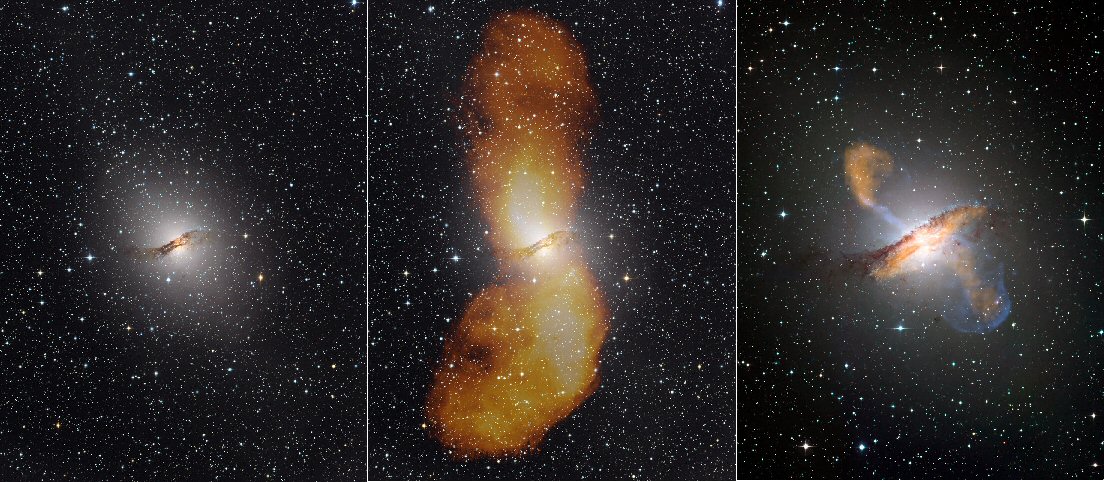
Figure 5. Cen A, as seen in multiple wavelengths. On the left is a visible light
image. In the center is a radio (orange) and visible composite. On the right is a composite
of visible, microwave (orange) and x-ray (blue) light. These images help astronomers to understand
the core of Cen A and the jet features. You can read
about the images, view movies and learn about what astronomers think is happening at the NASA website.
Left image from Capella Observatory. Middle image from Capella Observatory (optical),
with radio data from Ilana Feain, Tim Cornwell, and Ron Ekers (CSIRO/ATNF),
R. Morganti (ASTRON), and N. Junkes (MPIfR). Right image from ESO/WFI (visible);
MPIfR/ESO/APEX/A.Weiss et al. (microwave); NASA/CXC/CfA/R.Kraft et al. (X-ray).
Another good example of a radio galaxy is M87, an elliptical with a very
strong jet extending from it. M87 is relatively close, so the jet is
seen even in some visible light images. The jet is about 1800 pc long
(about 6000 light-years). Hubble Space Telescope observations of the
core indicate motions of material around 550 km/s about the center. By
using Kepler's laws we can estimate the mass of the core to be about 2.5 billion solar masses. For reference,
the mass at the center of our galaxy is a few million solar masses. That is a big
difference!
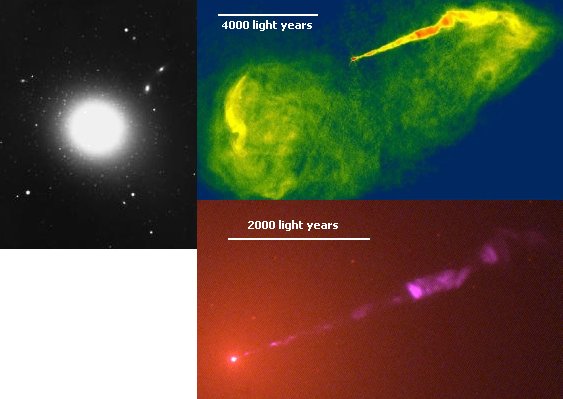 Figure 6. Images of M87, an elliptical galaxy with a
jet. The view at the left shows the regular telescopic view (image from
NOAO/AURA/NSF). The top right view is a radio telescope image, which
mainly shows the large jet coming out from the center of the galaxy
(image from NRAO/NSF). The lower right image is from the Hubble space
telescope and it shows the jet in more detail. Data from the Hubble
telescope were used to measure the velocity of material near the center
of the galaxy and estimate the mass of the black hole in the center.
Hubble image from NASA and John Biretta (STScI/JHU).
Figure 6. Images of M87, an elliptical galaxy with a
jet. The view at the left shows the regular telescopic view (image from
NOAO/AURA/NSF). The top right view is a radio telescope image, which
mainly shows the large jet coming out from the center of the galaxy
(image from NRAO/NSF). The lower right image is from the Hubble space
telescope and it shows the jet in more detail. Data from the Hubble
telescope were used to measure the velocity of material near the center
of the galaxy and estimate the mass of the black hole in the center.
Hubble image from NASA and John Biretta (STScI/JHU).
Radio galaxies can come in a variety of shapes - they can be spirals or
ellipticals, though it seems that the most extreme ones tend to be
ellipticals.
Now I suppose you think that these bizarre objects are out there at
very great distances. Actually, some of these strange radio galaxies are
relatively close. The really weird galaxies, the ones that astronomers
have still not figured out, are amongst the most distant objects out
there. Let's take a look at these really extreme galaxies...
Quasars
Quasars were originally thought to be stars with very strange spectra.
If you look at a quasar you usually see a point of light - just like what you
see when you look at a normal star in our galaxy. Remember, galaxies
traditionally look like fuzzy blobs, not points of light. Quasars (short
for quasi-stellar radio source) stood out from normal stars because they
had weird spectra. First of all, they have emission lines, which is
unusual for stars. Not only that, the spectral features did not
correspond to any normal spectral features. When you look at a star, the
spectrum usually has normal elements in it, like hydrogen,
carbon, iron, etc. The wavelengths where the emission lines were seen
didn't correspond to any of these things. They were just weird.
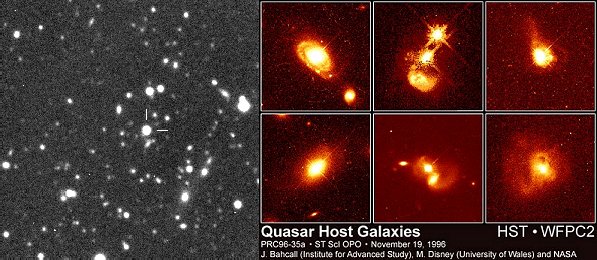 Figure 7. On the left, an image of a typical quasar
(the object in the middle with the two lines pointing to it) as seen
from the ground. Notice how much this looks like the stars that are also
in this image and are actually within our galaxy. To the right is a
collection of images of quasars taken by the Hubble Space Telescope. In
this picture it is possible to see hints of the galactic structure
around the quasars. Image on the left from Bill Keel's collection,
image on the right credits: John Bahcall (Institute for Advanced Study,
Princeton) Mike Disney (University of Wales) and NASA.
Figure 7. On the left, an image of a typical quasar
(the object in the middle with the two lines pointing to it) as seen
from the ground. Notice how much this looks like the stars that are also
in this image and are actually within our galaxy. To the right is a
collection of images of quasars taken by the Hubble Space Telescope. In
this picture it is possible to see hints of the galactic structure
around the quasars. Image on the left from Bill Keel's collection,
image on the right credits: John Bahcall (Institute for Advanced Study,
Princeton) Mike Disney (University of Wales) and NASA.
In 1963, Maarten
Schmidt was looking at the spectra of some of these quasars and
noticed that the spacing of the emission features was about the same as
that for hydrogen emission features, but they were well off their normal
wavelengths. Maarten did the calculations and found that the spectra
for the quasars would be what you would get if the features were
redshifted to longer wavelengths due to the motion of the object being
about 45,000 km/s = 15% the speed of light! This is a pretty high
velocity for a star! After some more study, Maarten figured out that the
object he was looking at (which has the really romantic name of 3C 273)
was actually fuzzy, meaning that it wasn't a star but a galaxy with a
really bright core. To put this in perspective, you should know that 3C
273 is one of the slower quasars out there!
If we use the Hubble law, we find that these incredibly large
velocities (many of them good fractions of the speed of light) appear to
correspond to incredibly large distances - amongst the greatest
distances measured!
We need to have word of CAUTION here about the redshifts. The
redshifts of quasars tend to be pretty large, so values of redshifts
(the symbol for redshift is z =  /
/ )
of two or three are not unusual. This means that the light has been
shifted to two or three times its current value (if normal wavelength
for a spectral feature is 1200Å, and the redshift, z, is
three, then the observed spectral feature is seen at a wavelength value
of 1200 + 3x1200 = 4800Å ). The formula for Doppler shift is
z=
)
of two or three are not unusual. This means that the light has been
shifted to two or three times its current value (if normal wavelength
for a spectral feature is 1200Å, and the redshift, z, is
three, then the observed spectral feature is seen at a wavelength value
of 1200 + 3x1200 = 4800Å ). The formula for Doppler shift is
z= /
/ = v/c
= v/c
Does this mean that a redshift (z) of two, implies a velocity of two
times the speed of light?
No. When such high velocities are observed you need to use a
different redshift formula, one that is based upon Special Relativity.
We have to use this formula since nothing can go greater than the speed
of light, c. The Relativistic Redshift formula allows values for
redshifts (z) greater than one, but velocities are always less than c.
The Relativistic Redshift formula is

Quasars are among the most distant objects seen and they have some
rather extreme characteristics -
- very fast moving - this is based upon the sizes of their
spectra's redshifts. The current maximum redshift for a quasar is one
with z=6.4 (which corresponds to a velocity of more than 96% the speed
of light!). See Figure 8 for the spectra of the current record holders
- very far away - we know this since Hubble's Law says if you are
moving very fast, you are very far away
- there are usually emission lines in their spectra, and often the
spectral features are broad, which indicate high speed motions within
the quasar (sort of like Type I Seyferts)
- very luminous - we know this since we know that quasars have huge
distances but don't look really faint. You'd expect that very distant
objects would also be very faint, but this is not true for quasars; they
tend to have respectable brightnesses. Actually, quasars are often
detected accidentally when people are studying what they think are a
bunch of stars in our galaxy. They are not hard to detect. Based upon
their distances and their apparent magnitudes we know that they are
thousands of times more luminous than normal galaxies like the Milky Way.
- sometimes the light source changes brightness over time,
indicating that they are variable energy sources
- based upon the rate at which the quasars change their brightness,
we know that the energy source in them covers a pretty small region of
space
- lower redshifted absorption lines are often seen in the spectra
of quasars. These are not part of the quasar but are due to stuff
between us and the quasar - remember the light from a quasar has to
travel a great distance, so there is a pretty good chance that it will
run into something along the way. Most of this stuff is hydrogen, and
hydrogen is often detected at a wavelength for a feature known as Lyman alpha, so the proliferation of
the absorption features is often called a Lyman alpha forest (Figure 9).

Figure 8. Spectrum of the currently highest redshifted
quasar. The Lyman Alpha feature (large
bump) is supposed to be at a wavelength of 1216 Å, which on the scale in the
spectrum would normally be at 0.1216 if the quasar wasn't moving! Click on the
image to see the full size version. Most of the light from this quasar is
only visible at infrared wavelengths - it is moving that fast.
Image from D. J. Mortlock et al, (2011). |
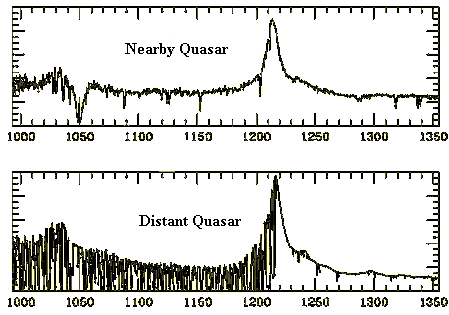
Figure 9. The
Lyman Alpha Forest is shown in the spectrum of the quasar on the bottom.
The nearer quasar's light is not absorbed by many intervening gas
clouds, so its spectrum doesn't have as many absorption features as the
more distant quasar. Based on the image from Bill Keel's slide set. |
Now we have strange galaxies which go from being the most extreme
(quasars) to being just a little quirky (radio galaxies). Are they all
drastically different, or are they all just variations of one common set
up? It might be easier to deal with them if there is just one model or
concept that can explain all of these weird things - that way we don't
have to come up with all sorts of different exotic ideas and figure out
why there would even be different exotic models. Sometimes in science,
it's better to search for a single solution than for many diverse
solutions. Often the simplest one is correct. The basic upshot is that
astronomers think that there is one model that can explain all of these
strange galaxies - from the strange spectral features and the unusual
energy sources to the crazy structures that are seen. The type of active
galaxy that is observed may only depend upon the observer's point of
view. Here is what the model is all about.
 Figure 10. The basic model for Active Galaxies. It
consists of a massive black hole (located in the center), an accretion
disk around the black hole, a bunch of high velocity clouds (yellowish
ones around the disk), low velocity clouds (bluish ones located above
and below the accretion disk), a dusty torus (cut open here so you can
see the stuff in the middle), and jets going perpendicular from the
center (cut off in this view). The relative sizes of objects are not
correct here, but are just shown so that you can get an idea of where
everything is. Of course, the colors are completely unrealistic.
Figure 10. The basic model for Active Galaxies. It
consists of a massive black hole (located in the center), an accretion
disk around the black hole, a bunch of high velocity clouds (yellowish
ones around the disk), low velocity clouds (bluish ones located above
and below the accretion disk), a dusty torus (cut open here so you can
see the stuff in the middle), and jets going perpendicular from the
center (cut off in this view). The relative sizes of objects are not
correct here, but are just shown so that you can get an idea of where
everything is. Of course, the colors are completely unrealistic.
The model is made up of the following components
- A black hole in the center (this can be
as massive as millions or billions of solar masses ). Remember, black holes can have a
large amount of mass, but they won't cover huge amounts of area (usually
smaller than a solar system in radius).
- An accretion disk forms around the black
hole. This would be much larger in size than the black hole and would be
very hot and dense near the center - producing UV light and x-rays in
most cases or even some gamma-rays. Even though the accretion disk would
cover more space than the black hole, it is still relatively small compared
to the size of the galaxy that it is located within.
- Clouds of material would be orbiting around the disk. These
clouds will be heated up by the extreme temperatures of the accretion
disk. These clouds have to move at pretty high speeds so they don't fall
into the accretion disk or, ultimately, into the black hole. They are
basically hot, fast, gas clouds near the black hole.
- The high energy accretion disk can cause the formation of
jets perpendicular to the disk.
This is due to the strong magnetic field that
arises from the hot material in the disk. Stuff (mainly hydrogen)
travels from these jets at huge speeds, up to 99% the speed of light!
These jets are visible in a variety of wavelengths depending upon
the amount of material they eject and their temperature.
- A dusty, wide torus (donut shaped feature) is around the whole
thing. This torus would be cooler and hard to look through (since it is
dusty), so it can block the view of the accretion disk, the black hole,
and the hot clouds.
- Located away from the high velocity disk and the black hole is
where you would find other clouds of material, but this stuff is moving
at relatively low velocities. Also, this material would tend to be found
away from the dusty torus.
How does this explain everything? First of all, not all strange
galaxies will have each component in equal amounts - some may not have
very significant black holes, or jets, or things like that. That is
something that should be remembered.
How do the different active galaxies show up? Let's say you are looking
along the edge of the disk, which will be pretty boring, since the dusty
torus blocks all the action in the center. You aren't seeing any of the
high velocities or high-energy action in the center. All you are seeing
is the dusty torus, which would be a good IR source, and the low
velocity clouds away from the center. This is a good way to explain the
appearance of Seyfert Type II galaxies.
Now let's look at it from an angle. Now we can see the action in the
middle, including all those high velocity clouds. This will produce
broad emission lines. You are also seeing stuff that is a source of high
energy light, like UV, x-rays or maybe even gamma-rays, so now you're
seeing the stuff that we associate with Type I Seyferts.
Another direction you can look is straight down the throat of one of
those jets. Now you'd think that this would show you all sorts of stuff,
but actually it doesn't, since the bright core is not really easy to see
since it is behind the material being shot out of the core in the jet.
You are really just seeing most of the stuff that is associated with
the jet that is coming toward you. That material is from a jet, which
is produced by the strong magnetic field of the accretion disk, so you
would see non-thermal light from this source as well as highly
polarized light. This is what you'd get if you were to look at a BL Lac
(Blazar).
You can also see from most of these directions the ingredients for a
radio galaxy, though that would depend upon how much radio-emitting
material is being ejected by the jets. A quasar could be observed along
the same viewing angles as the Type I Seyfert views or some of the other
angles, but since quasars are so distant you might not be able to detect
evidence of all of these other features. A summary of these views in
the active galaxy model is available for viewing here.
Does this model really make sense? In a way it does. First of all,
in recent studies by the
WISE IR
and the
Chandra x-ray telescopes indicate
that massive black holes appear to be present in the cores of most galaxies.
In fact it appears that black holes
are quite common and very active in most galaxies, and remember, you can determine
their masses by seeing how objects move around them (good old Kepler's
laws).
Here
is a news item about such a black hole, one that is only
a few million solar masses in a distant galaxy.
In fact, it seems that it would be unusual
for a galaxy not to have a
massive black hole in its core! Recent observations with all the main space telescopes
have shown evidence of a star being torn about by a massive black hole in the core of a galaxy.
Just read about it in this link.
If you remember the material about radio telescopes, you will recall that they expell material
at great distances from their cores. What if something is in the way? Apparently that has
happened. The so-called "Death Star Galaxy" is blasting material from its core in the direction
of a nearby, small galaxy, which is causing all sorts of disruption to the small galaxy. You
can read about it at the
Chandra website. There are three videos that go with this - one of a
model,
one of the real data,
and one showing how they relate to one another.
One interesting aspect of these likely black holes is that it appears that black holes tend to be
either small (few dozen solar masses) or very large (millions or billions of solar masses).
There are very few instances of "in-between" black holes - those that would have perhaps a
few thousand solar masses worth of material. Recently observations of the cores of globular
clusters indicate that perhaps there could be some "in-between" black holes in them.
So far the
smallest black hole detected in the core of a galaxy was "only" 50,000 times the mass
of the Sun. Hardly worth mentioning...
Getting back to the very massive black holes, you might remember that the radio galaxy M87
(Figure 6) is likely to have a huge black hole in its core,
and there are many galaxies with visible
disks in their cores, jets, and the things described in the above
model for an active galaxy. So why aren't there more active galaxies out there?
It is likely that when the galaxies were first forming, that
they were initially quasars. At that time, they were sucking in huge
amounts of material into the accretion disk and black hole, so that
when we look at them now, we see them as very distant, active, high energy
objects. However, this won't last forever; eventually the party has to
shut down and the mechanism that produces all of this energy will fade
away as less and less material is sucked in. If you don't feed the black
hole, you don't get the fireworks show. Over time a quasar will fade
away, possibly going through a Seyfert phase and then finally ending up
as just a boring galaxy. This helps to explain why we only see quasars
at great distances (which corresponds to looking further into the past,
when galaxies were younger). Actually, you don't have to put a huge
amount of material into these things to get all of the observed energy
that comes out of them. Maybe only about 1 solar mass of stuff per year
needs to be fed into the black hole to provide the observed energy
output.
Galaxies can also undergo other changes that will alter their fates, such as mergers.
In fact, elliptical galaxies may have gone through quite a few steps to reach
their final fate. Observations by the
Hubble Space Telescope appear to show a range of steps for the evolution
of ellipticals, from formation and sudden
star formation, to eventual mergers. Over time the mass, color and appearance of a galaxy
can change significantly given the right conditions.
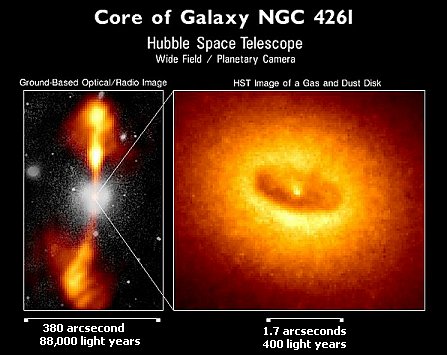 Figure 11. Views of NGC 4261. On the left is a
composite of the visible light image (whitish blob) and radio telescope
image (yellow lobes). On the right is an up close view of the core from
the Hubble Space Telescope. Notice that this is pretty much a disk
structure located at the center of the galaxy, which is in line with the
model for Active Galaxies described above. Image credit: Hubble Space
Telescope.
Figure 11. Views of NGC 4261. On the left is a
composite of the visible light image (whitish blob) and radio telescope
image (yellow lobes). On the right is an up close view of the core from
the Hubble Space Telescope. Notice that this is pretty much a disk
structure located at the center of the galaxy, which is in line with the
model for Active Galaxies described above. Image credit: Hubble Space
Telescope.
There seeems to be all sorts of support for the unified model described above
to explain active galaxies, so obviously we've solved it, right? NO!
Just because a theory can explain what is going on doesn't mean it is necessarily
correct. In 2014, astronomers using the WISE infrared satellite surveyed
over 170,000 active galaxies with black holes - some obstructued from view by
gas, some unobstructed. The problem was that there wasn't a random distribution of the galaxies
in terms of how obstructed they were. If there was only one reason to explain how
well you can see the centers of these galaxies (your viewing angle), then there should be a random distribution
of the degree of obstruction, but there wasn't. This indicates that something else is
influencing how well we can see the centers, more than just our viewing angle. You can learn more about this study
here. Does this mean we have to scrap the theory? No, it just means that
we are missing something else that can influence our view of active galaxies, so more work needs to be done!
Gravitational Lensing
Another thing that is seen occasionally with quasars and other distant
galaxies is one of the effects of Generally Relativity, the distortion
of space due to massive objects. Let's say you have a bunch of galaxies
in a cluster. You then have a lot of mass, and since mass distorts
space, you have a bunch of distorted space in the area of the cluster.
Anything that has to travel through a cluster of galaxies, like light
from very distant objects, will have to deal with the spatial
distortions that pop up due to the galaxy cluster. Under some special
circumstances, you don't even need to have a bunch of galaxies, but just
a well placed large galaxy in front of another distant object, like a
quasar. This distortion is just like the distortion seen in the
starlight that travels close to the sun. In this case, since the light
isn't coming from a star but from a distant galaxy, you don't have a
single point of light but rather a larger blob to screw up. The effects
of this distortion can be really nifty.
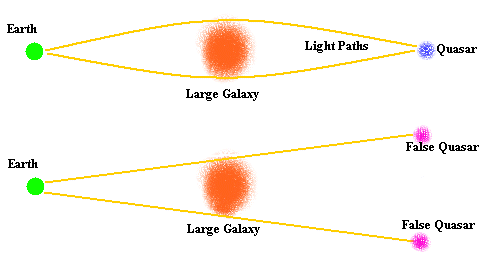 Figure 12. The set up for gravitational lensing. The
light from the distant quasar passes near the large galaxy and the path
is bent. An observer on the Earth may think that there are actually two
quasars since they see light from the same quasar coming from two
slightly different directions.
Figure 12. The set up for gravitational lensing. The
light from the distant quasar passes near the large galaxy and the path
is bent. An observer on the Earth may think that there are actually two
quasars since they see light from the same quasar coming from two
slightly different directions.
At times the distortion will cause us to see not one but two images
of the same quasar. Sometimes we see more images of the same quasar; in several cases up
to four images of the same quasar have appeared in various spatial
distortion events. There is one image that shows five images of the
same quasar being distorted (you can see images of that
here). When you have something doing these things to the
light from a distant object, then you have what is known as a Gravitational Lens. A gravitational
lens can do more than just make multiple images appear. There are
several instances where a large concentration of galaxies distorts space
like a fun-house mirror distorts your view of the world around you. The
images of the more distant galaxies aren't actually reproduced in this
case but are smeared out into unusual shapes.
 Figure 13. The Einstein Cross. The four bright
sources around the larger light source are actually four images of the
same quasar that has been split up into four different images. The large
light source is the core of the galaxy that is distorting the light from
the distant quasar. Image from Bill Keel's slide set.
Figure 13. The Einstein Cross. The four bright
sources around the larger light source are actually four images of the
same quasar that has been split up into four different images. The large
light source is the core of the galaxy that is distorting the light from
the distant quasar. Image from Bill Keel's slide set.
Very distant objects are more likely to have their light screwed up,
so we can look at some of these distant objects more closely to see just
how far away they are. This sort of cuts down on the "searching for a
needle in a haystack" for distant objects, since we know they won't be
as likely to be distorted if they are nearby. This also is one of the ways
we know that quasars are very far away - their light would not likely
be distorted if it didn't have to travel so far (there was a time when
quite a few astronomers thought that quasars can't really be so
distant, but gravitational lensing kind of shot their arguments down).
Actually, some of the most distant objects ever discovered were found
through the study of a gravitational lens system. In one case, the
redshift (z) for the distorted galaxy was measured at 4.92, which
corresponds to a velocity of about 94% the speed of light.
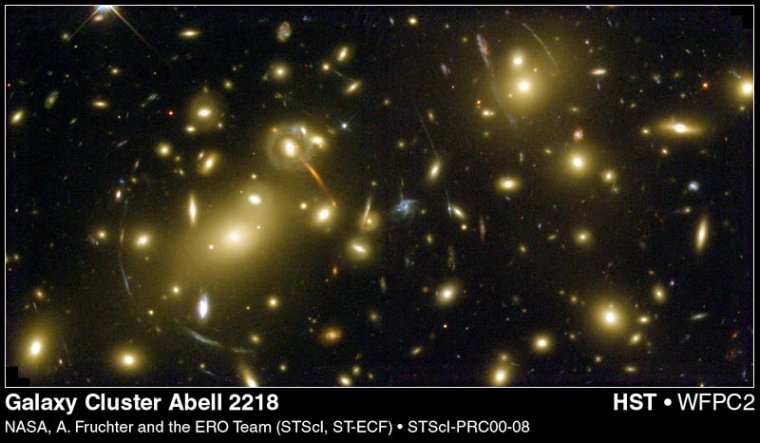
Figure 14. A cluster of
galaxies distorting the light from even more distant galaxies. There are
all sorts of streaky images of galaxies shown here around the large
cluster. This is one of the best examples of gravitational lensing,
especially since it is happening on such a large scale.
Credits: NASA, A. Fruchter and the ERO Team (STScI, ST-ECF).
Gravitational lensing is easily visible in large concentrations of
mass like a giant cluster of galaxies. However it is also possible to
see a similar effect on a much smaller scale. Astronomers look for
indications of dark matter in our own galaxy by trying to see the
influence that unseen but massive objects
have on the light from more distant stars behind them. The unseen
objects will cause the light from distant stars to become brighter
for a short period of time in a well defined manner. This happens due to the
warping of space that causes the light from a distant object to be concentrated
so that the light source looks abnormally bright. However to
see just one of these "lensing events" astronomers have to monitor literally
millions of stars to see if any of them do get brighter. This
is further complicated by the fact that there are stars that normally
do change their brightnesses (remember Cepheids and RR Lyrae?). So
those normal variable stars have to be taken into account when
people are searching for the small scale gravitational lensing effects of dark
matter. Several of the current searches for dark matter,
particularly the MACHO searches, use this method
to find the unseen objects.
Recently astronomers using the Hubble Space Telescope has observed such
a gravitational brightening effect on the light of a distant Ia supernova - remember, these were the ones that
have well defined brightnesses, so when one of these appears too bright, that requires a
closer examination. You can read about the discovery here. Another study by the Chandra x-ray telescope shows both the multiple images
of a quasar and the brightening of it. This study (which can be seen
here) also was able
to measure the rotation of the core of the quasar, which is likely a black hole.
Gravitational lensing is also visible at other wavelengths, including gamma-rays. Observations
of a gamma ray burst
in a distant galaxy resulted in two images of the outburst due to gravitational
lensing. However the two outburst didn't happen ("burst") at the same time. If light has to travel along
different paths to get to you, the time for that journey will depend upon the length of the path, which
will depend upon how the objects are lined up. You can play around with
this simulation to show
how the outburst can be seen days apart depending upon the alignment of the objects to you.
In 2007, a report from the Hubble Space Telescope indicated
that gravitational lensing was used to infer the existence of a large
distribution of dark matter in a distant galaxy cluster. You can read about
the discovery by following this
link. In this case, the distortions appear to happen at a pretty good distance away
from the actual location of the cluster, indicating that dark matter can extend quite
a ways out from the galaxy or galaxy cluster that it is located in.
Remember, we can't actually see dark matter, but we can certainly
detect it by its influence on matter and light. Figure 15 shows the galaxy cluster
and the evidence for the dark matter.
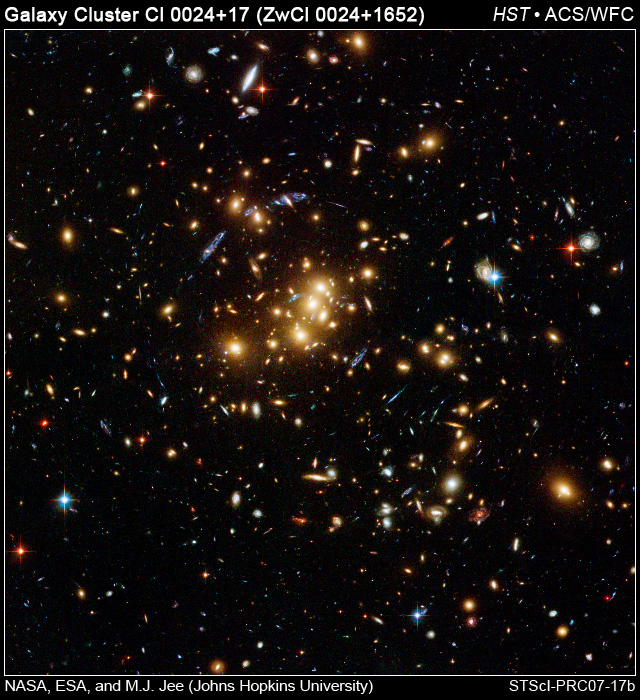
Figure 15. The effects of dark matter
on an image of a galaxy cluster. The blue smears are actually images of more
distant galaxies, whose light is smeared by the present of dark matter. If you click
on the image, you'll see an animation that shows the distribution of dark matter
that the astronomers were able to derive based upon the distortion of galaxies.
Credits: NASA, ESA, M. J. Lee, and H. Ford (Johns Hopkins University).
Most Distant Objects
What is the most distant object?
If there is one thing that can be said about astronomy, records don't last
long, so that there is a good chance that during the time you are in this course, these
records will be broken. So here goes - currently the candidate for the
most distant object, which is thought to be a proto-galaxy (a galaxy in the process of forming)
is UDFj-39546284
(what a lovely name). Any ways, this object has a redshift of 11.9,
which indicates that the light from this object left it 13.42 billion years ago.
Based on our current estimates for the age of the Universe at about 13.8 billion years, the light we see today
came from an era when the Universe was at most only 3% its current age. There is a bit of debate about the actual distance to this object,
since its distance isn't based upon the spectra but upon how red it appears. So this is really only a possibility, not a slam-dunk certainty.
What is the distance to the object, which has a verified distance - something based upon a spectra? Actually that object is also
the most distant galaxy. The most distant
confirmed galaxy is at a redshift of z=8.68, and goes by the name of
EGSY8p7.
This object was discovered in July 2015 at the Keck Observatory in Hawaii, and its light was altered by gravitational lensing,
which also provides a method for measuring distances.
Other phenomena are also seen at great distances, such as supernova or gamma-ray bursts. Generally
these distance breakers will eventually run out since we can only see objects out to a certain distance (you'll
learn why that is the case in the next sets of notes). So don't expect major revisions to these numbers.
How is it possible for us to find more distant objects? We could do this by building larger telescopes,
but that requires a lot of money. We can also use years of data and build up images by gathering together
the light. Remember, a lot of modern
data is digital. So you can combine multiple pictures of the same region of the sky together to get a better and
better image as more and more light is gathered together. In June 2014 the folks at the Hubble Space Telescope released the latest version of the
Hubble Ultra Deep Field,
an image that is based upon observations by several telescopes of one small part of the sky during a time that spanned 10 years and
required about 600 hours of observations - that's like staring at something for 25 days straight! An image of this
view is shown below, and if you click on it, you'll see a larger image. In this small region of sky you can see
thousands of little specks - each of those is a distant galaxy, probably around 10,000 total galaxies.
How much of the sky does this picture cover? Take a penny out of your
pocket and hold that penny 280 meters away, nearly 3 football fields away, and the size of the penny at that distance
is how much sky is in this picture. Imagine what is visible in all the other directions of the sky!
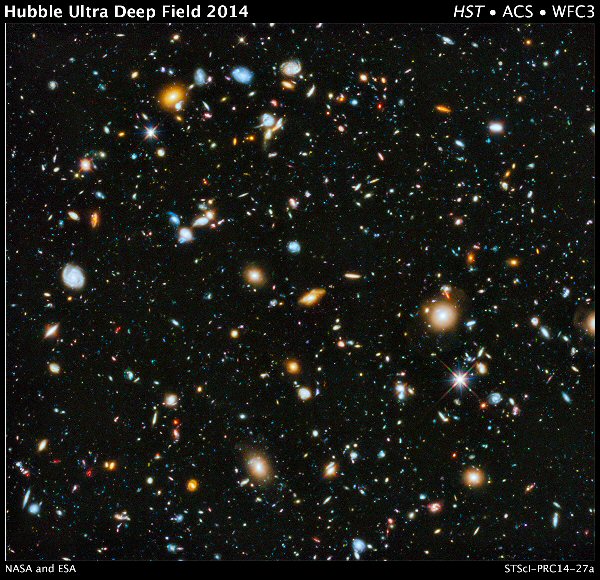
Figure
16. The Hubble
Ultra-Deep Field, 2014 version. This image contains about 10,000 galaxies. Some of
them are thought to have redshifts greater than 10.
If you click on the image, you'll get a view at a larger version.
In this larger view you should some small red objects which are very distant
faint galaxies with redshifts near 6.
Image from
NASA, ESA, H. Teplitz, and M. Rafelski (IPAC/Caltech), A. Koekermoer (STScI),
R. Windhorst (Arizona St. Univ.), and Z. Levay (STScI).
Images such as the HUDF and all of the redshift surveys help astronomers understand
the evolution of not only galaxies but also the Universe. They are able to see how
galaxies at great distances have some rather interesting characteristics; amongst
these is the existence of massive black holes early on (which supports the
quasar model discussed above). Not only do we see this with visible light telescopes,
but also x-ray telescopes such as Chandra reveal galaxy evolution and black hole
growth. So I guess we should move onto the next step - discussing the Universe.
Now that you've read this section, you should be able to answer these questions....
- What are the characteristics of the various types of active galaxies - BL Lac, Seyferts, Radio Galaxies?
- What are the extreme characteristics of quasars and what basic assumption does this information rely upon?
- What other observations tell astronomers that quasars are very distant objects?
- Why is a relativistic redshift formula needed when dealing with quasars?
- What is the proposed model that explains the observed characteristics of the different types of active galaxies and how is it able to explain all of those different possible active galaxy types?
- What is gravitational lensing?
- At what sort of distances are the most distant objects?
 Figure 1. The spectrum of a BL Lac galaxy is
compared to that for a normal galaxy. In the normal galaxy there is a
mix of absorption lines (from mainly stars) and emission lines (from hot
gas clouds). In the BL Lac galaxy there are neither of these things,
which makes it difficult to determine the chemical nature, velocity and
distance of these galaxies. Based on the image from Bill Keel's slide set.
Figure 1. The spectrum of a BL Lac galaxy is
compared to that for a normal galaxy. In the normal galaxy there is a
mix of absorption lines (from mainly stars) and emission lines (from hot
gas clouds). In the BL Lac galaxy there are neither of these things,
which makes it difficult to determine the chemical nature, velocity and
distance of these galaxies. Based on the image from Bill Keel's slide set. 
 Figure 3.
Spectra for the two types of Seyfert galaxies. Notice how the emission
lines for the Type I Seyferts are wider than that for Type II Seyferts.
Based on the image from
Figure 3.
Spectra for the two types of Seyfert galaxies. Notice how the emission
lines for the Type I Seyferts are wider than that for Type II Seyferts.
Based on the image from  Figure 4.
Figure 4. 
 Figure 6.
Figure 6.  Figure 7.
Figure 7. 


 Figure 10.
Figure 10.  Figure 11.
Figure 11.  Figure 12.
Figure 12.  Figure 13.
Figure 13. 
